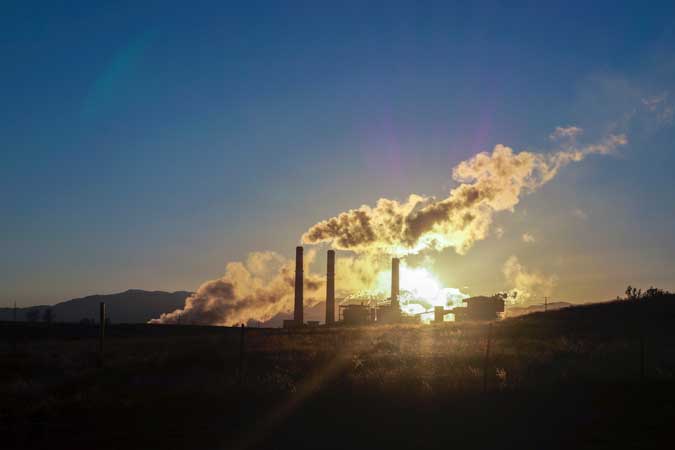Finance department prefers emissions trading scheme over carbon tax

By Beatrice M. Laforga, Reporter
THE DEPARTMENT of Finance (DoF) said it prefers the adoption of an intensity-based carbon emissions trading scheme (ETS) over an outright carbon tax, as the Philippines seeks to adopt a policy response to climate change.
DoF Assistant Secretary and Spokesperson Paola Sherina A. Alvarez told BusinessWorld that based on a study conducted with the World Bank, an intensity-based ETS is the more suitable option of carbon pricing instrument (CPI) for the Philippines than a carbon tax because such form of taxation requires huge institutional capacity to implement.
“Based on the PMR (Partnership for Market Readiness) CPI technical report, the DoF supports the establishment of an intensity-based ETS primarily focused on the power sector rather than other CPI options with other sectors, such as an absolute ETS and a carbon tax on the transportation and industry sectors,” Ms. Alvarez said in an e-mail last week.
An intensity-based cap measured through the “grid emission factor” (tCO2/MWh) will have the option of “buying out” excess emissions. The system puts a limit on the volume of carbon emissions producers can generate, with a trading platform where entities can buy emission units to cover their needs or sell those that they do not use.
The DoF said it is looking at price volatility as a major factor in the government’s decision on whether or not to rely on taxation to limit carbon emissions.
“An emissions trading scheme is initially preferable to a carbon tax given this sectoral focus and the strong public sensitivities around energy prices and the impacts of increased taxation on these. Given the large levels of uncertainty around future economic growth and emissions in the absence of a CPI, the use of an intensity-based cap on emissions is favored to help manage this without major price volatility,” Ms. Alvarez said.
However, she said initial findings showed that CPI should be limited to the power sector first for easier but targeted implementation, while ensuring that the system covers the segment with growing emissions.
The government also has to carefully design the system to make sure that it will not overlap, but instead complement the Department of Energy’s (DoE) Renewable Portfolio Standards (RPS).
She said the DoF prefers setting a limit based on intensity than an absolute cap because the latter entails a high risk or may result in low allowance prices, while the country still has no accurate forecasts on emissions.
“Once established, it will be possible to consider expansion to other emitting sectors such as large industrial facilities…. The CPI might also be readily combined with existing mechanisms to support clean energy, such as the Renewable Energy Technology Fund (RETF), by channeling the proceeds from ‘buying-out’ excess emissions into this fund,” she added.
Ms. Alvarez said the DoF is still developing a CPI with the help of the World Bank. They are currently studying the impact of reducing emissions and the advantages of CPIs, and are working on to promote public awareness on the measure.
“Moreover, analyses will be conducted on CPI’s interplay with energy sector policies and the potentials for including the industry sector,” she added.
Antique Rep. Loren B. Legarda filed House Bill 2184, which proposed a cap-and-trade system in the industry to bring down greenhouse gas emissions and combat climate change. The measure is still pending at the House Committee on Climate Change.
The Philippines aims to cut its emissions by 75% by 2030 under its commitment to the Paris Agreement.



